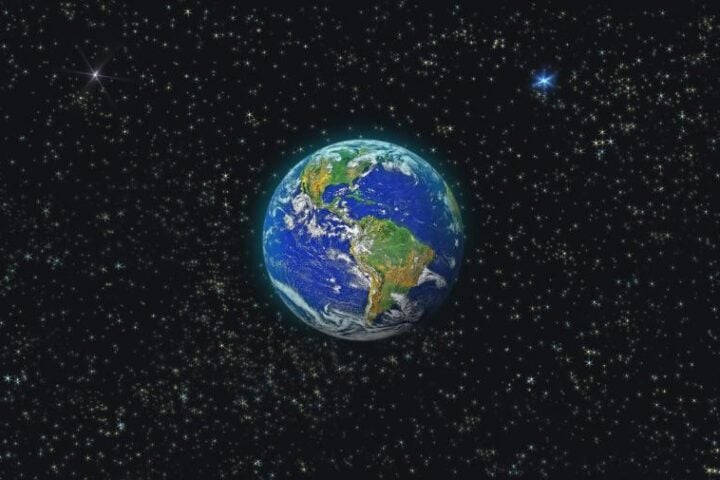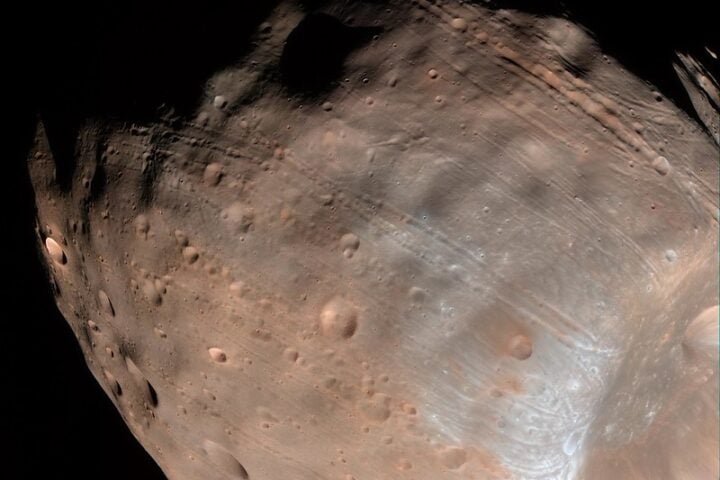The celestial spectacle of MACHO 80.7443.1718, a binary star system located 169,000 light-years away in the Large Magellanic Cloud, unveils a dramatic cosmic play where colossal waves, three times the height of our sun, crash upon the surface of a massive star. This system, known as a “heartbeat star,” pulsates in brightness due to the gravitational interactions with its companion, creating a rhythmic light display akin to a celestial pulse. The larger star, with a staggering 35 times the mass of our sun, experiences these gigantic tidal waves, which are whipped up by its companion star during its close orbital passes every 32.8 days.
Astrophysicists Morgan MacLeod and Avi Loeb from the Harvard–Smithsonian Center for Astrophysics have utilized computer modeling to delve into the gas dynamics on the surface of the primary star in this system, revealing that these waves, reaching heights of about 2.5 million miles, break violently upon the star’s surface, unleashing a potent torrent of energy. MacLeod vividly describes the aftermath of these crashing waves as a “big foamy mess,” likening it to the residual froth left behind by powerful ocean waves on a beach. This stellar foam, or the hot stellar matter, forms an envelope around the primary star, which is cyclically destroyed and reformed with each passing of the companion star and the ensuing tidal wave.
The phenomenon observed in MACHO 80.7443.1718 is not just a stellar curiosity but a window into the dynamic and sometimes violent interactions within binary star systems. The system’s brightness fluctuates by a remarkable 20%, or 200 times more than typical heartbeat stars, providing a unique observational opportunity for astronomers. MacLeod and Loeb view this system as a potential natural evolution of close binaries, especially considering the high mass of the primary star, which seems to amplify the observed phenomena.
In a broader context, the study of such extreme star systems can shed light on the intricate gravitational interactions and their consequential effects on stellar evolution. The insights gleaned from observing and modeling the activities of MACHO 80.7443.1718 could potentially be applied to understand similar instances in the vast cosmic arena. For instance, a study published in Nature Astronomy in August, which also explored the phenomena of tidal waves in a star system, highlighted how gravitational interactions could cause drastic and rhythmic changes in a star’s brightness, providing a parallel to the activities observed in MACHO 80.7443.1718.
Similar Posts
In the cosmic dance of stars, the phenomena of tidal waves, gravitational interactions, and their impact on stellar brightness and evolution become a fascinating chapter, offering astronomers and astrophysicists a rich field for exploration and understanding. The ongoing studies and observations of heartbeat stars, particularly those with extreme characteristics like MACHO 80.7443.1718, pave the way for deeper insights into the mysteries of stellar evolution, interactions, and the dynamic activities that unfold in the distant reaches of our universe.
The exploration of MACHO 80.7443.1718 brings to the forefront the dynamic and sometimes tumultuous interactions occurring in binary star systems. The colossal tidal waves, their violent crashing, and the subsequent energetic activities provide a vivid and dramatic illustration of the cosmic forces at play in the distant universe. The observations and models developed through studying these phenomena not only enrich our understanding of stellar activities but also weave into the broader tapestry of our knowledge of the cosmos.
Heartbeat stars like MACHO 80.7443.1718 serve as beacons in the cosmic ocean, their rhythmic pulsations in brightness providing a unique observational field for astronomers. The extreme characteristics observed in such systems, from dramatic brightness fluctuations to the generation of gigantic tidal waves, open up new avenues for research and exploration in stellar astrophysics, potentially unlocking new secrets of the cosmos waiting to be discovered.
As astronomers set their sights on further exploring heartbeat stars and understanding the intricate and powerful interactions within binary star systems, the cosmic seas promise to unveil more of their mysteries. The future explorations in these stellar oceans, observing the tides, waves, and pulsations of distant stars, will undoubtedly enrich our cosmic voyage, guiding us toward deeper understandings of the universe and our place within it.


















